When most people think of air guns they picture the Daisy Red Ryders and break barrel pellet guns we used for plinking cans in the backyard. That’s not what this article is about. I’m talking about a whole different world of air guns called PCPs (pre-charged pneumatics) that rival the most accurate firearms on the market.
If sub-MOA accuracy and whisper-quiet rifles pique your interest, PCP airguns might be just what you are looking for. Within the world of PCPs there are a ton of brands, rifle styles, and caliber options (.177 all the way to .72 caliber). I enjoy all aspects of PCP air rifles from hunting to competitions, and I’ve put together a guide to help you get started in the sport.
Why PCP Air Rifles?
What You Need to Know to Get Started
How to Fill a PCP Air Rifle
How a PCP Air Rifle Works
Slugs: The Airgun Ammo of the Future
Big Bore Airguns
Why Are PCP Air Rifles “Better” Than Other Systems?
- They can be insanely accurate. (MOA at 100 yards is very achievable)
- Little to no recoil
- Smoother firing cycle than spring loaded air rifles
- No pumping in between each shot like with a pump gun
- Accessories for these rifles are awesome and only getting better. (They are every bit as customizable as an AR-15)
- There is no “forward recoil” like a spring powered air gun has, so high end rifle scopes are well suited for PCP use
What You Need to Know to Get Started Shooting PCP Airguns
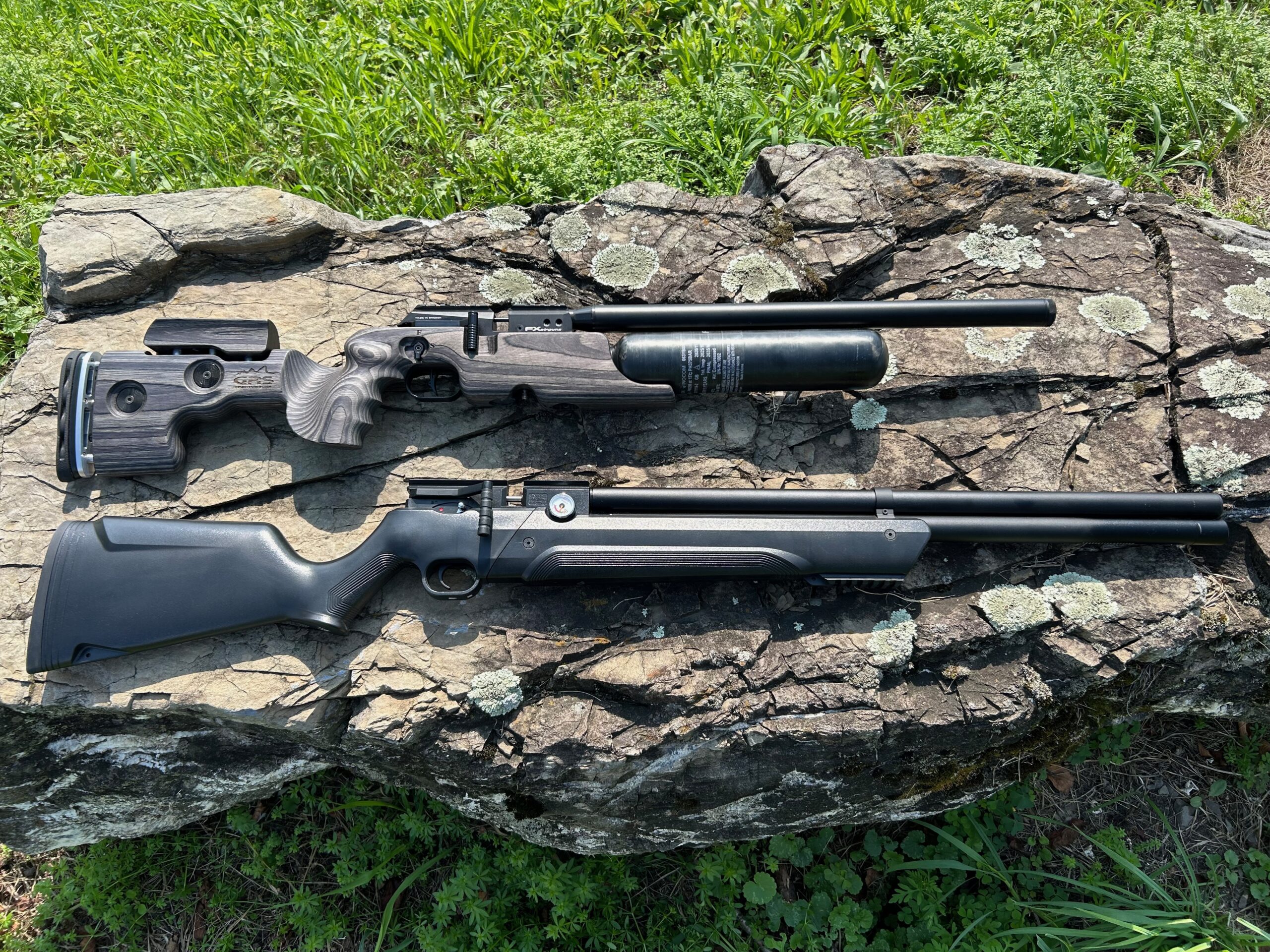
Whether you’re graduating from your springer or a power burner convert, there’s a lot to learn as you step into the word of PCP airguns. Here’s what you need to know to get started.
My Recommended Beginner Gear
Read Next: Best Air Rifles
Storage
You never want to run a PCP out of air and leave it depressurized for long periods of time. Keeping full or near full air pressure in the rifle keeps the seals tight and avoids leaking issues.
Cleaning
When you first get any rifle you need to clean the packing grease film out, and then about every 500 shots or so it could use a few patches. I like to do 3-4 patches soaked in Ballistol, and then one or two dry patches. Note: You want to use a non-petroleum product like Ballistol so the rifles seals don’t degrade. Petroleum products can also cause a detonation/loud bang when under pressure.
A simple pull through cord with a Ballistol soaked patch is all that is needed. Regular bore brushes can score the barrel and hurt accuracy. Air gun stores sell various versions of these pull through cords and they are not expensive.
Tuning
Many modern PCP airguns can be tuned for better consistency and more power. There are tons of great YouTube videos on tuning air rifles that show you how to tune your specific model. It’s worth noting that not all air rifles require intense tuning. Many rifles, like the Air Venturi Avenger come ready to shoot out of the box. In general, the more tuning settings a rifle has the more accurate it can be, but it is not a must for the casual target shooter or small game hunter.
Hunting with a PCP Air Rifle
Assuming it is legal in your state, small bore PCP air rifles (.177 to .30 cal) are perfectly suited for pigeons, squirrels, rabbits, and even woodchucks with proper shot placement using pellets. If you are shooting slugs at high velocities, the capabilities expand in both effective range and animal size (up to coyotes). Click here for information on hunting with an airgun in your state.
Airgun Laws
Airguns aren’t legal everywhere. In most states, you can have an airgun shipped right to your door. While in others, you might need a permit or jump through other legal hoops to get your airgun. Click here for more information regarding airgun laws in your state.
How to Fill a PCP Air Rifle
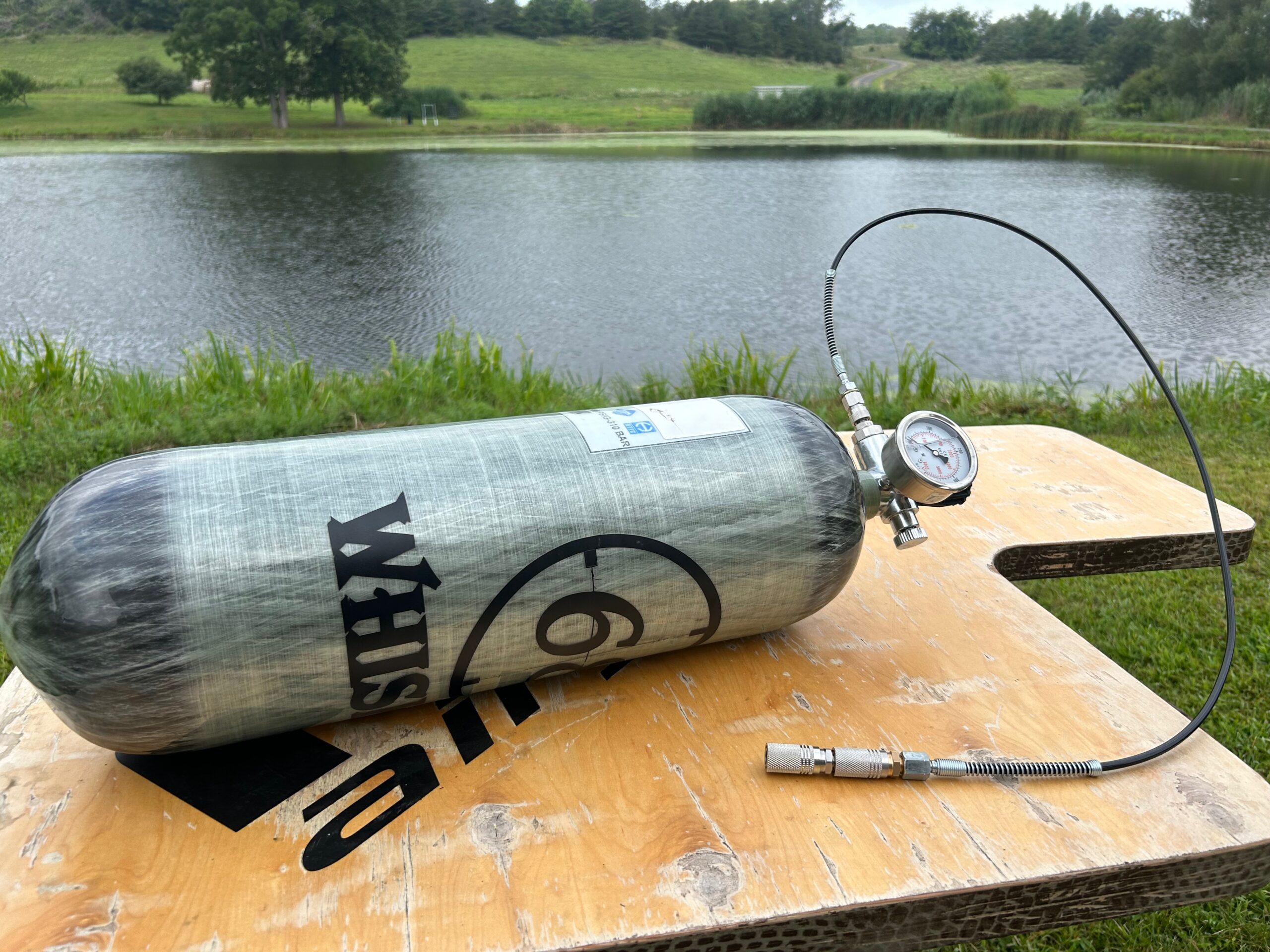
PCP air rifles use a pressurized air-storage tank, which must be filled from another high pressure source. Here’s a guide on different ways you can get air into your airgun.
When to Refill Your Airgun
If the rifle has a regulator you should fill it back up before it goes under the pressure the regulator is set at. If it does not have a regulator, you will know it is time to refill when your shots start hitting low on the target or the group size opens up. Many rifles also have a gauge with a green zone to indicate the range of recommended pressure. Remember, always keep your air in the airgun’s tank.
Air Tanks
Recommended Tank: Airmarksman Carbon Fiber 9.0L from Utah Airguns
The fastest and simplest way to fill a PCP rifle is from a larger, separate air tank. Think of a scuba or fireman’s air tank. The advantage of using these large air storage bottles is that filling the rifle takes mere seconds. They also provide many fills to the rifles on board tank before needing to be refilled themselves. The drawback is that these bottles are relatively expensive and must be filled from a high-pressure compressor. Unless you get your own high-pressure compressor you will need to have it filled at a scuba shop, a local fire department (a case of beer donation helps a lot here), or a paintball shop.
Hand Pumps
Recommended Pump: Air Venturi MK5 Hill Pump Kit
Many people still choose to hand pump their rifles to save money on the filling apparatus, especially when they first get into the sport. The drawback is that it is slow, and it can be quite tiring to pump up a rifle to 3600 psi. On rifles with smaller on-board air tanks this isn’t a huge problem, but trust me, fill a FX Impact or similar rifle a few times and you will be looking for a new solution rapidly. I happily hand pumped my Airforce “Talon” for well over a year. However, once I filled a 480cc carbon fiber tank by hand I ordered supplies to avoid doing that again immediately.
Compressors
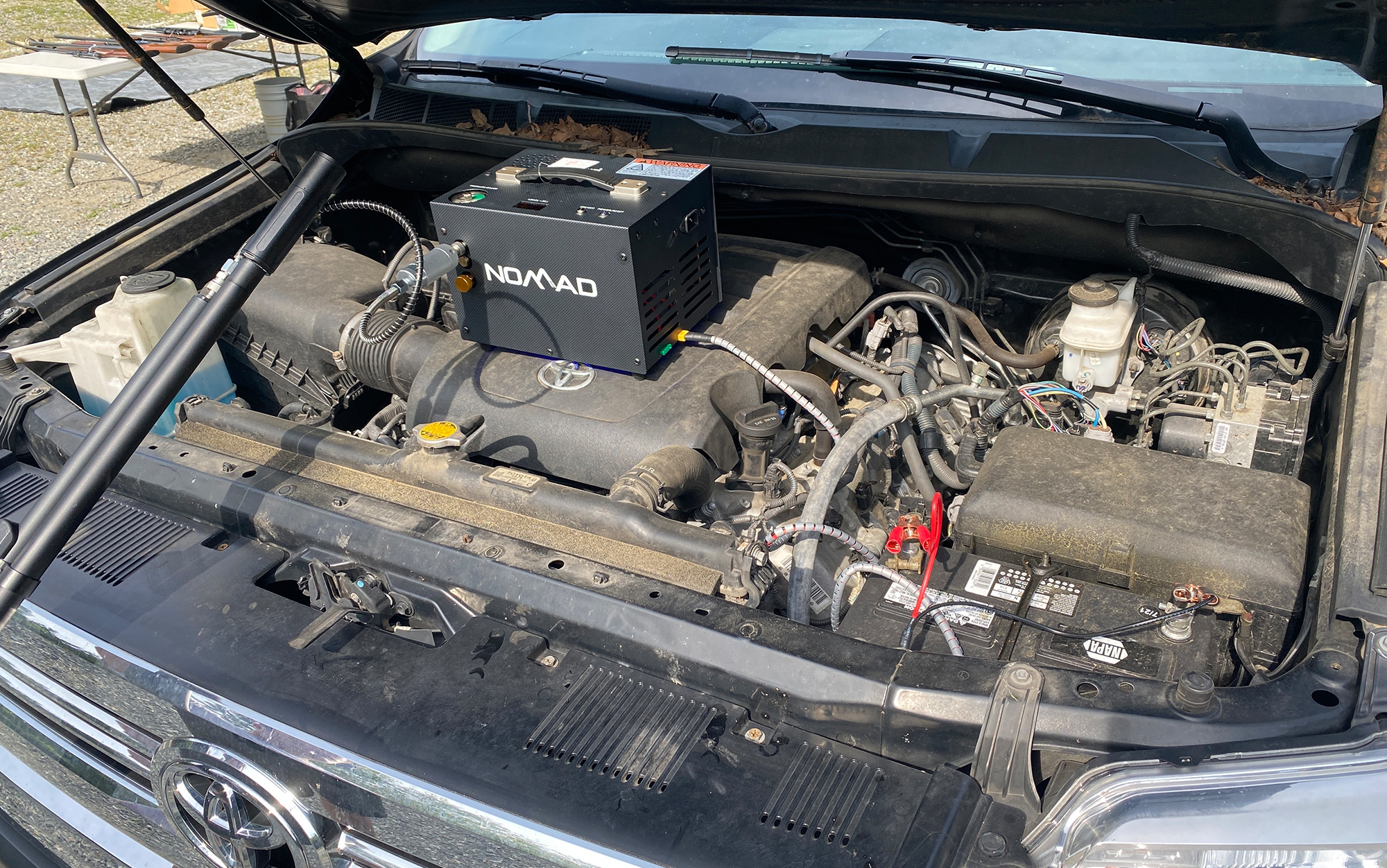
Recommended Compressor: Lil Foot 2.0 from Donnyfl
Another popular option is to get a mini compressor that fills the rifle directly, and avoids needing a costly accessory tank. These compressors are usually no larger than a boom box, and only weigh a few pounds. Most models plug right into a 110 outlet, and many come with alligator clips to attach them to a car battery. That’s super handy if you are way out in the boonies and need to refill your rifle. The drawbacks to compressors are that they are slow to fill, noisy, still cost a few hundred bucks, and are prone to breakdowns. I’ve had excellent luck getting mine repaired under warranty, but you are still done shooting until it’s fixed.
Read Next: Best PCP Air Rifle Compressors
Tank Fittings
PCP rifles will either accept a probe (like a bicycle pump with a needle on it for filling a football), or a foster fitting. The foster fitting is easier to use, and most rifle manufacturers are migrating towards foster fittings because of their popularity with shooters.
How you choose to fill your rifle is your choice, but it is worth noting that nearly all the professional shooters and serious enthusiasts choose the bigger accessory fill tank. They are just so simple to use, don’t have many parts that can break, and they get you filled and shooting again fast.
How a PCP Air Rifle Works
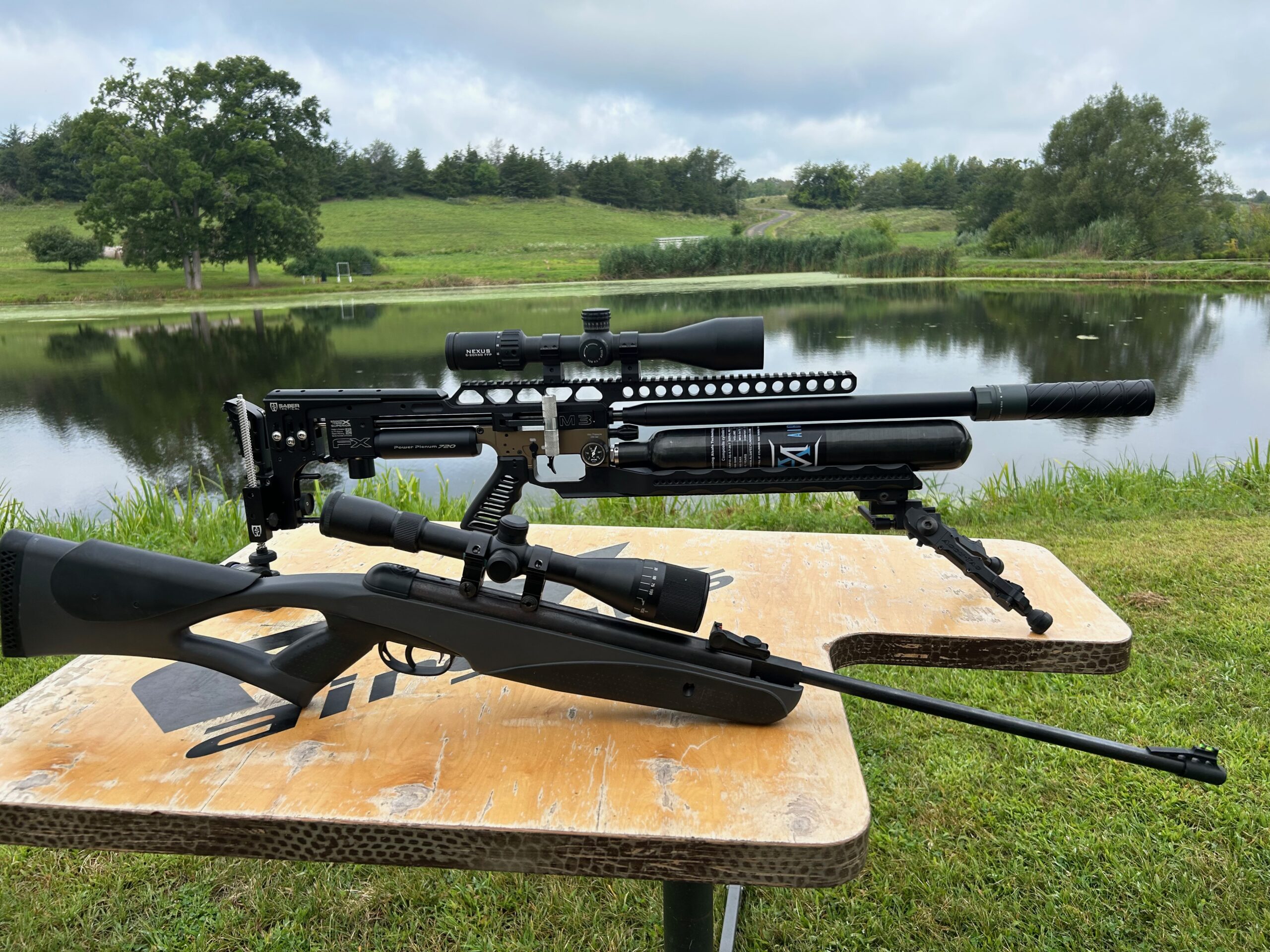
Pre-charged pneumatic rifles have a high-pressure air storage tank. They can be different styles from a fancy carbon fiber bottle to a simple metal cylinder along the bottom of the barrel. These on-board tanks allow the shooter to fire a lot of shots before needing to refill—hundreds in smaller calibers. As you can imagine the larger the caliber the faster air is consumed, resulting in a lower shot count per fill.
Number of Shots Per Fill (FX Impact M3 with standard 480cc bottle)
- .177 caliber: 250-375 shots
- .22 caliber: 100-300 shots
- .25 caliber: 60-160 shots
- .30- caliber: 55-100 shots
*Shots per fill varies depending on tune.
Firing System
The most common firing system in a PCP works like this: When the trigger is squeezed a hammer strikes a valve to release a short, controlled burst of air that propels a projectile towards the target. Most rifles have an adjustable hammer spring that allows the shooter to tune the amount of air released, much like a reloader tunes hand loads to suit their needs.
Many also have a regulator that allows only a precise air pressure to move from the on-board bottle to the barrel. Think of it like a very precise amount of gun powder in a rifle casing.
Regulated rifles generally have a plenum, where a large volume of air is stored at the precise pressure of your choosing. When the airburst is released, it comes from this plenum which automatically refills itself for the next shot. The plenum keeps a large volume of air at the ready just behind the barrel, so it can be released quickly versus having to wind its way through the entire rifle’s valving system. It sounds complicated but it happens in the blink of an eye and doesn’t slow down the shooting process at all.
Slugs: The Airgun Ammo of the Future
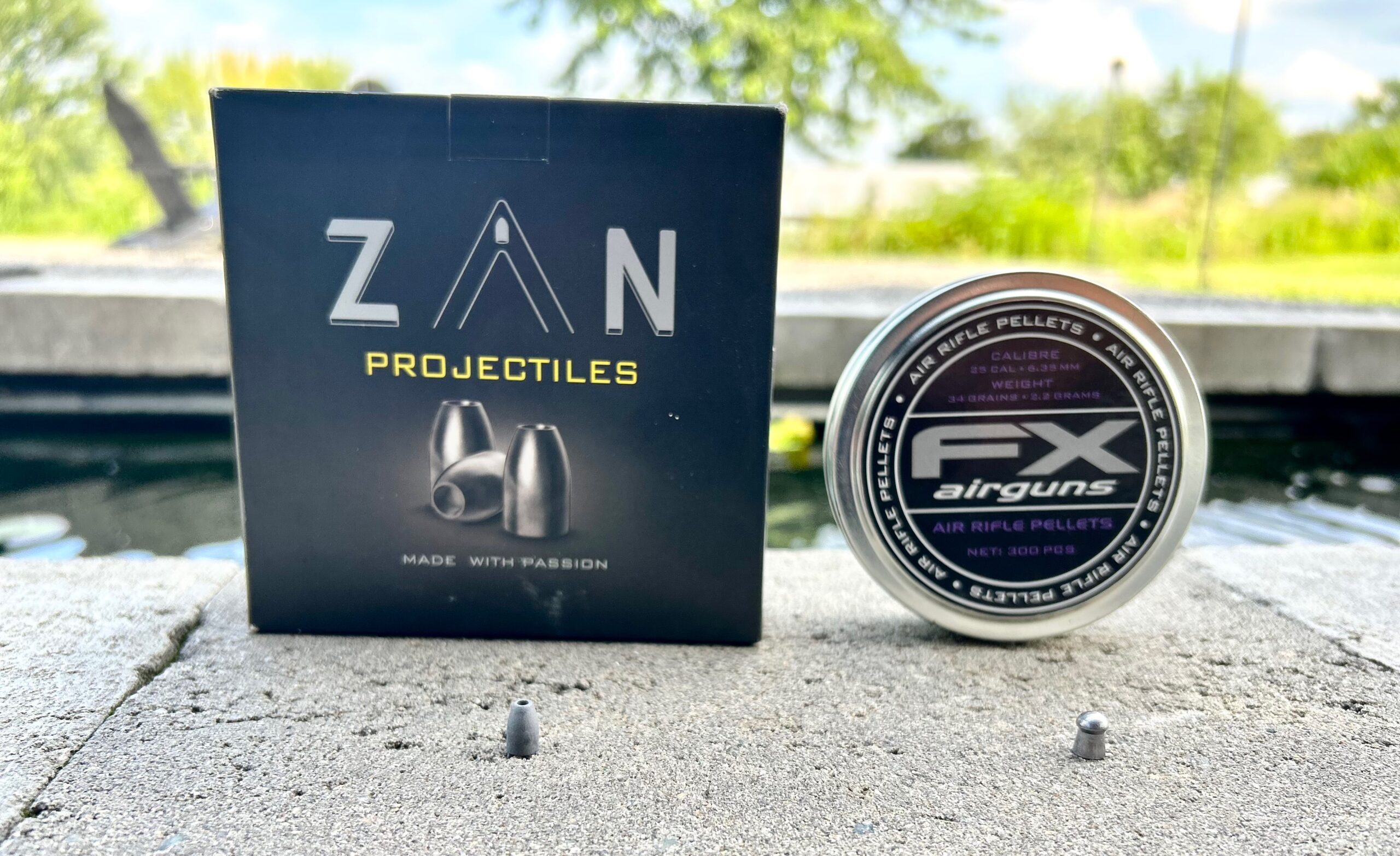
Air rifles have pretty much been limited to two kinds of ammo historically, pellets and BB’s. These days slugs (actual bullets) are taking over the air gun world, largely because of the accuracy potential of PCPs. With ballistic coefficients two to four times greater than their pellet counterparts, enthusiasts are shooting farther distances and hitting targets harder than ever before. A long shot five years ago would have been around a hundred yards. With slugs, it’s very common to see cold bore hits at 200, even 300 yards on pigeon size targets.
Multiple ammo manufacturers are jumping on board to supply different designs, diameters and weights so you can find what shoots best in your gun. Rifle manufacturers are also jumping in, and even designing special twist rate barrels to accommodate this growing sector. The terminal performance of hollow point slugs has gained even small-bore air rifles a place in the medium size game hunting arena. It is now common to see hunters using .22 caliber air rifles to anchor groundhogs, and even small wild hogs with proper shot placement.
Another place slugs shine is the PRS and NRL22 world. Many firearm competitions now have air gun divisions, and nearly every competitor in it is shooting slugs at high speeds. Staying just under the transonic zone for accuracy (1,000-1,050 fps), there is not much advantage left to shooting a rimfire .22 LR over a .22 caliber air gun. Some air gun only competitions are awarding huge cash prizes too, like “The Rocky Mountain Airgun Challenge” which awards $20,000 for first place.
Big Bore Air Rifles
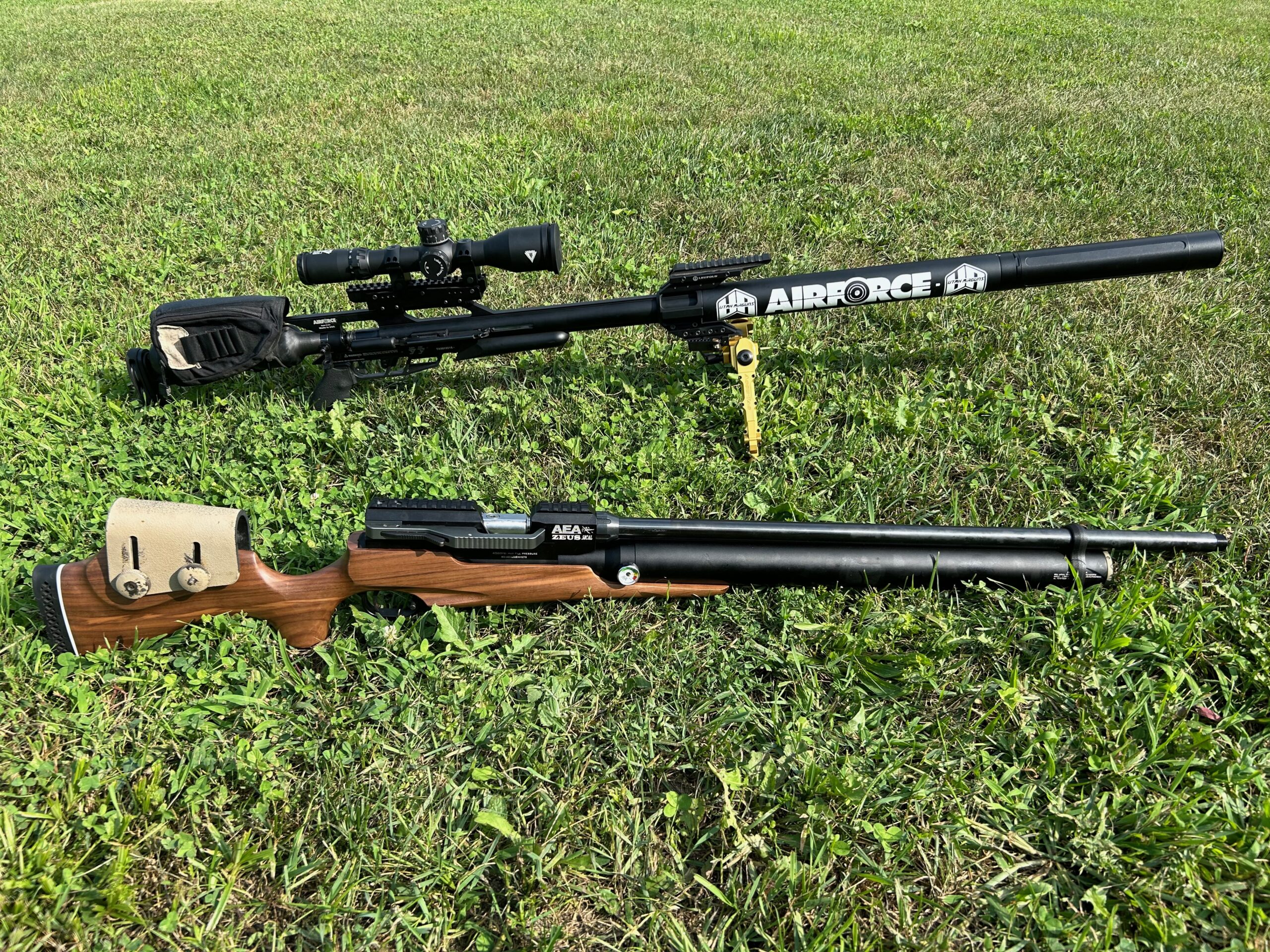
One of the coolest things about PCP air rifles is their ability to generate a lot of power. We are talking about the power to hunt big game at 100 yards and closer or ring steel at 1,000 yards. Yes, 1,000 yards is really pushing the envelope of what is possible with an air rifle, but it can and has been done. A quick search of big bore videos will turn up guys like Chris Turek from “Upnorth Airgunner” and Rick Rehm from “Shooter 1721” making some truly incredible shots with these powerhouses.
The two most popular platforms in big bore seem to be the Airforce “Texan”, and the “Zeus” from AEA air guns. The most popular caliber choices are .257, .308, .457, .50, .58, and .72. Having shot all these personally I can tell you they are a ton of fun to target shoot with, and the larger calibers (.457 and up) are perfectly suited to whitetails, black bears, and wild hogs. Through the efforts of people like Chris Turek, many states are now allowing air rifles to be used during the regular big game seasons. Be sure to see if your state is one of them, and if there are caliber and or foot pounds of energy requirements to use them in your state.
Read Next: Most Powerful Air Rifles
Final Thoughts on PCP Air Rifles
PCP air rifles are here to stay and are evolving quickly. Luckily for us that means budget rifles are available for as little as $300 and supped up race guns with a base price of $2,100 exist that will absolutely blow your mind with power and accuracy. There are many good rifle options in between those price points as well. PCP’s are so popular now that there are great shops dedicated completely to air rifles and nothing else. Utah Airguns, Northeast Airguns, and The Pellet Shop to name a few of my favorites. Some shops will not only talk you through the buying and accessorizing of your new rifle, but they can also tune it for you before they send it out. As we airheads are fond of saying, “It’s a great time to be an airgunner.”
